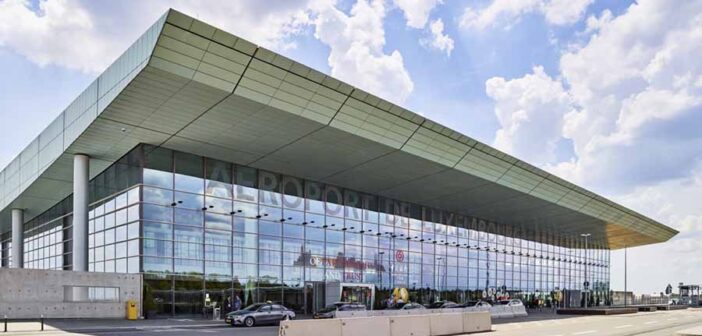Luxembourg Findel Airport, located 6 kilometres east of Luxembourg City, offers a compact and efficient experience for travellers. Serving over 5 million passengers annually, it ranks as a key hub for both passenger and cargo traffic, with airlines like Luxair, Ryanair, and Lufthansa connecting to over 107 destinations across 32 countries. Its proximity to the city and modern facilities make it a practical choice for business and leisure travellers alike.
Accessing the airport is straightforward, with excellent public transport options. Free bus services, including lines 6, 16, and 29, connect the airport to Luxembourg City’s centre and central railway station in about 20 to 30 minutes, running every 10 to 15 minutes. The airport is also the northern terminus of Line 1 of the Luxembourg City tramway, providing direct access to Kirchberg.
Taxis, available outside Terminal A, cost around €30 to the city centre, with a 15-minute journey. Drivers can reach the airport via the A1 motorway’s exits 7 and 9, with over 2,000 parking spaces across short-term and long-term car parks, including a free 15-minute drop-off in Car Park C. Car rental agencies like Avis and Hertz are located in the arrivals hall, ensuring easy onward travel.
The airport’s two terminals, A and B, are designed for ease of navigation. Terminal A, the main hub, handles most flights and features check-in desks, security, and a departure lounge across four floors. Terminal B, used for smaller Schengen flights, offers 10 departure gates and 6 arrival gates, connected to Terminal A by a 108-metre covered walkway. The compact layout ensures short walking distances, with clear multilingual signage guiding passengers.
Security typically takes under 15 minutes, but peak morning hours (6–8 am) can see longer queues due to high passenger volumes or staffing shortages, as noted on X. Fast Track security, available for €15, helps bypass delays. Travellers are advised to arrive two hours early for flights to account for potential congestion.
Dining and retail options are well-suited to the airport’s size. Terminal A’s airside area features Oberweis for pastries, Sandwiches & Cie for quick bites, and Starbucks for coffee, while a panoramic restaurant on the mezzanine offers runway views and local dishes. Terminal B has limited food options, primarily a small café. Retail includes an Aelia Duty Free shop in Terminal A with cosmetics, alcohol, and souvenirs, alongside Press & Books and a fashion outlet. Prices are higher than in the city, so budget travellers may prefer to shop beforehand. The relaxed atmosphere ensures a pleasant wait.
Facilities are modern and traveller-focused, with free unlimited Wi-Fi via the “Lux-Airport-Free-WiFi” network and charging stations airside. Accessibility is prioritised, with ramps, lifts, and a dedicated assistance service for passengers with reduced mobility, bookable in advance. Family amenities include nurseries, and a free observation deck in Terminal A offers plane-spotting opportunities. The Luxair Lounge in Terminal A, accessible for around €30, provides snacks, drinks, and a quiet space, though it can be crowded during peak times. Three ATMs are available, but there is no currency exchange, so travellers should use the ATM beside Press & Books. Smoking areas are located outside the terminal, and overnight stays are permitted with a valid ticket.
On-time performance is generally reliable, with the airport handling around 60 daily passenger flights. Delays, when they occur, are often due to weather, particularly fog, or air traffic control issues across Europe, as reported on Flightradar24. The night curfew from 23:00 to 06:00 can lead to diversions for late flights, so passengers should check statuses via the airport’s website or apps like Flightradar24. Airline-specific issues, such as technical faults, can also cause disruptions.
Connections are efficient, with minimum connection times of 45 minutes for intra-terminal transfers and 60 minutes for inter-terminal ones, facilitated by the walkway between Terminals A and B. Luxair’s extensive European network supports smooth transfers, but international passengers may need to clear immigration, which can take 30 minutes during busy periods. Those with tight layovers should plan extra time, as budget carriers may not assist with missed connections.
Potential delays are typically linked to weather, staffing shortages, or baggage handling issues during peak seasons. The airport’s small size can amplify congestion, particularly at security or check-in during early morning rushes. Travellers should monitor flight updates and pre-book parking or assistance to ensure a smooth journey.




